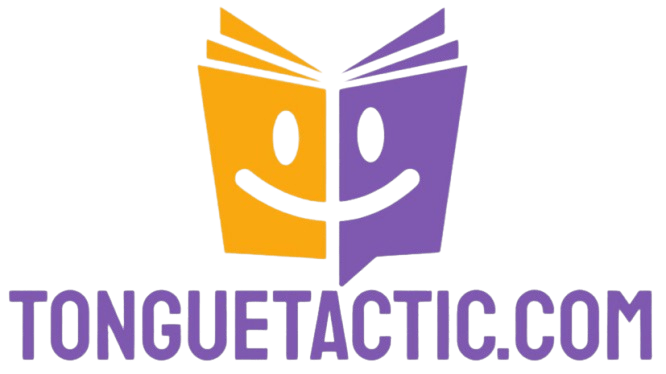top resources for learning slang in different languages
Slang is the heartbeat of every language, adding life and personality to conversations.
If you’re planning a trip abroad or want to connect with native speakers, understanding slang is vital. This article highlights top resources to help you master slang in various languages, from online dictionaries to engaging YouTube channels.
Learn how to integrate slang into your language skills, tackle challenges, and avoid potential mistakes. Get ready to enhance your language journey with these amazing tools!
Contents
- Key Takeaways:
- 1. Online Slang Dictionaries
- Social Media Groups and Forums
- 3. Language Learning Apps
- 4. YouTube Channels and Videos
- 5. Blogs and Websites
- 6. Language Exchange Programs
- 7. Local Slang Guides
- 8. Slang Flashcards and Games
- 9. Podcasts and Audio Resources
- 10. Slang Phrasebooks
- 11. Cultural Immersion Programs
- 12. Language Schools and Classes
- 13. Online Language Communities
- 14. Native Speakers and Language Partners
- 15. Personal Experiences and Travels
- How Can Learning Slang Benefit Language Learners?
- Frequently Asked Questions
- 1. What are the top resources for learning slang in different languages?
- 2. How can I use language learning apps to learn slang?
- 3. Are there any online dictionaries specifically for slang words?
- 4. Can I learn slang by watching movies or TV shows in different languages?
- 5. Are there any books or textbooks that can help me learn slang in different languages?
- 6. Is it important to learn slang in different languages?
Key Takeaways:

Explore online slang dictionaries for a fun and informal way to expand your language skills.
Join social media groups to connect with native speakers and immerse yourself in real slang usage.
Use language learning apps to incorporate slang into your daily practice and understand cultural contexts better.
1. Online Slang Dictionaries
Online slang dictionaries are priceless for language learners. They offer a wealth of informal expressions and context that enrich your learning experience.
These resources are crucial for anyone looking to learn a language effectively. They provide insights into everyday communication, helping you understand how the language is used today.
Using these dictionaries enhances your vocabulary and helps you interact more naturally with native speakers.
These tools become even more important when you use dedicated language websites like Live Lingua and LanguageGuide.org.
Live Lingua offers lessons that include common informal phrases. LanguageGuide.org uses interactive exercises to help you get familiar with everyday language.
Together, these resources create a supportive learning environment, boosting your confidence and fluency as you navigate social interactions.
Social Media Groups and Forums
Social media groups and forums have become vibrant hubs for language learners. They offer chances to engage in language exchange and connect with diverse communities.
These platforms link you with learners at all levels, allowing you to share resources, practice skills, and seek advice.
Platforms like The Polyglot Club and Tandem are excellent for connecting with native speakers. You can practice conversational skills in a relaxed environment.
Whether you re a beginner or more experienced, tailored courses meet your needs. This interaction through text, voice, and video enhances your learning and promotes cultural exchange.
3. Language Learning Apps
Language learning apps have transformed how you approach free language learning. They offer innovative and interactive tools that elevate your vocabulary lessons and writing skills on-the-go.
With platforms like Duolingo, italki, and Lingua.com at your fingertips, you unlock a world of resources, including video lessons, pronunciation assistance, and engaging exercises tailored to your unique learning style.
These apps make language learning accessible and enjoyable. You can immerse yourself in your chosen language at your own pace. They are designed to keep you motivated, fostering a sense of accomplishment that is crucial for continuous improvement.
Features like interactive lessons and gamified quizzes encourage regular practice. Flashcards help you master vocabulary effectively. The flexible nature of mobile learning allows you to study whenever and wherever you like, perfectly aligning with today s fast-paced lifestyle.
By utilizing these tools, you enhance your linguistic abilities and enjoy a richer learning experience that prepares you for real-world conversations and diverse linguistic contexts.
4. YouTube Channels and Videos
YouTube channels dedicated to language learning have become vibrant resources. They offer free, engaging video lessons that cover a diverse range of topics and styles.
Take channels like FluentU, which focuses on expanding vocabulary through real-world videos. Then there s Rachel’s English, which hones in on pronunciation, providing tips to help you sound like a native speaker.
These resources make learning simple and fun, making language study accessible to anyone with an internet connection, and they fit your study schedule.
With interactive features like comment sections and live Q&A sessions, you ll find a community where you can practice and share insights. This collective engagement turns traditional learning into a collaborative adventure, making your journey toward fluency enjoyable.
5. Blogs and Websites
Blogs and websites focused on language learning offer invaluable platforms for free language acquisition. They feature a wide range of e-learning sites that cater to your unique needs as a learner.
Platforms like Duolingo and Babbel stand out for their gamified learning experiences, keeping you engaged while you sharpen your reading and comprehension skills.
Websites such as italki connect you with native speakers for real-time practice, bridging the gap between theoretical knowledge and practical application.
These resources are crucial for boosting your vocabulary and understanding, as well as for deepening your cultural insights key elements for authentic communication.
By harnessing the strengths of these educational tools, you cultivate a well-rounded mastery of the language, enriching both your personal and professional pursuits.
6. Language Exchange Programs
Language exchange programs are essential for real-world language practice. They allow you to connect with native speakers and enhance your linguistic skills and cultural knowledge.
Engaging in conversations with native speakers gives you insights into idiomatic expressions and regional dialects, deepening your understanding of the language.
Platforms like Tandem and HelloTalk make these connections seamless. They offer features that let you tailor your exchanges to align with your interests, creating a more engaging experience.
This environment builds a community where learners thrive, transforming your language acquisition journey into something educational and genuinely enjoyable.
7. Local Slang Guides

Local slang guides are essential resources for you as a learner. They help you navigate the details of specific languages and their informal expressions, enriching your language learning journey.
These tools are invaluable aids that bridge the gap between textbook knowledge and real-world communication. In languages like Spanish or Portuguese, regional slang can vary dramatically, capturing local customs and humor.
By utilizing resources such as online forums, social media groups, or dedicated slang dictionaries, you can immerse yourself in the vibrant everyday language spoken by people in your target language. This not only enhances your vocabulary but also deepens your cultural appreciation.
Such knowledge can elevate a simple greeting into a more meaningful exchange, encapsulating the vibrancy of everyday conversations.
8. Slang Flashcards and Games
Slang flashcards and games present a delightful and interactive way for you to enhance your vocabulary lessons. They make the learning journey engaging and truly memorable!
You can seamlessly integrate these tools into mobile apps or utilize them in classroom settings. This allows you to practice your writing skills and test your grasp of informal language in a dynamic way.
Incorporating games into your studies reinforces your understanding of slang and boosts your overall language proficiency. Mobile apps like Quizlet and Memrise make learning fun and effective!
Quizlet s match and gravity games prompt you to recall slang terms quickly. Meanwhile, Memrise employs humorous visuals and mnemonics to make retention a breeze.
These resources bridge the gap between formal language education and casual conversational skills. They ensure that you not only memorize slang but also grasp the contexts in which it should be used.
This approach boosts your engagement and paves the way for longer-lasting vocabulary retention.
9. Podcasts and Audio Resources
Podcasts and audio resources have become essential tools in your free language learning arsenal. They allow you to sharpen your listening skills and immerse yourself in a variety of cultural contexts.
Programs like Easy Languages offer a wealth of audio content that complements video lessons, deepening your understanding of language used in everyday situations.
These platforms present a diverse range of content, from engaging interviews and thought-provoking discussions to captivating storytelling and themed lessons. They cater to your unique interests and proficiency levels.
By actively tuning into these materials, you can refine your ability to grasp different accents and dialects skills crucial for real-world communication. Authentic conversations reveal cultural nuances that enrich your learning experience.
This multifaceted approach builds your confidence in both speaking and comprehension, significantly enhancing your overall language acquisition journey. Tune in to Easy Languages today and experience the language like never before!
10. Slang Phrasebooks
Slang phrasebooks are essential tools for you as a language learner. They offer a curated selection of informal expressions that elevate your language acquisition and cultural comprehension.
These resources are invaluable for navigating languages and communicating effectively in everyday situations. By weaving slang phrases into your vocabulary lessons, you ll enhance your conversational skills and gain a deeper understanding of the cultural nuances that influence language usage.
Whether your goal is to blend in seamlessly with locals or simply grasp pop culture references, these phrasebooks provide priceless insights. They typically include real-life conversation examples, making the learning experience dynamic and relatable.
Popular resources include:
- “Street French Slang” helps you understand everyday conversation in France.
- “English Slang for Dummies” a comprehensive guide to informal English expressions.
You can also dive into online platforms like Urban Dictionary. It continuously updates slang usage, ensuring you remain in sync with the ever-evolving landscape of language and its cultural significance.
11. Cultural Immersion Programs
Cultural immersion programs offer you unparalleled opportunities to engage deeply with both the language and the culture. They provide a complete way to learn a language.
Join these programs to dive into the heart of language and culture! Interact with native speakers in authentic settings, enriching your understanding of specific languages and their cultural nuances. These experiences enhance your language skills and promote cultural awareness, making them invaluable for anyone truly looking to learn a language in context.
Typically, these programs include activities like:
- Cooking classes
- Traditional festivals
- Community events
These activities allow you to observe how language is intricately woven into daily life. Real-life interactions with locals help you develop conversational skills, encouraging you to practice in real-time while navigating everyday situations.
This hands-on experience builds your confidence and aids in mastering colloquial expressions those unique phrases that don t translate directly. Ultimately, cultural immersion also serves as an enriching path that bridges the gap between theoretical knowledge and practical application, ensuring that your journey into language can be transformational don t miss out!
12. Language Schools and Classes
Language schools and classes provide you with a structured environment for learning, complete with comprehensive resources from language learning websites that cater to every skill level, including beginners.
These institutions focus on developing your writing skills, offering pronunciation assistance and enhancing conversational fluency. They create a supportive atmosphere for your language acquisition journey.
Engage in interactive lessons that reinforce your understanding and application of the language systematically. The curriculum is designed thoughtfully to progress logically, ensuring you build on your existing knowledge while gaining exposure to new vocabulary and grammatical structures.
Qualified instructors provide personalized feedback, guiding you through challenges and celebrating your achievements. This tailored support cultivates not just comprehension but also confidence, allowing you to practice speaking without fear of making mistakes.
The experience gained in these formal settings equips you with the tools needed to communicate effectively and express yourself creatively in your target language. Start your journey today sign up for a class that excites you!
13. Online Language Communities
Online language communities provide vibrant platforms to connect, share resources, and engage in language exchange. They transform free language learning into a truly collaborative experience.
Within these communities, you’ll find interactive lessons and discussions that enable you to practice your language skills alongside native speakers and fellow learners. Immerse yourself in these environments to expand your understanding of the language while gaining valuable insights and support from like-minded enthusiasts.
The significance of these online gatherings is immense. They cultivate a sense of belonging among learners from diverse backgrounds. Social media groups become invaluable tools for asking questions, sharing experiences, and offering encouragement.
This interactive learning approach boosts motivation and fosters accountability, leading to a deeper commitment to mastering the language. Within these dynamic spaces, every interaction presents an opportunity for growth.
You ll find friends eager to learn alongside you! Negotiate meaning, correct one another, and celebrate progress together, enriching your language learning journey in ways that traditional methods simply cannot match.
14. Native Speakers and Language Partners

Engaging with native speakers and language partners is essential for you as a language learner. It allows authentic interactions that significantly enhance your language skills.
These relationships facilitate language exchange. You can refine your pronunciation, improve writing skills, and boost fluency through practical, real-world practice.
By grasping the cultural context and nuances of the language, you can communicate more effectively and gain deeper insights into the culture behind it.
These interactions boost your confidence when speaking, as you receive immediate feedback and support.
Platforms like Tandem, HelloTalk, or Meetup are fantastic for connecting with speakers from around the globe. They foster not only your language skills but also the potential for lasting friendships.
Your language partners will introduce you to colloquial phrases and help you navigate cultural references, ensuring a richer learning experience.
Engaging in conversations that cover everyday topics allows for practical applications, making the learning process both enjoyable and profoundly effective.
15. Personal Experiences and Travels
Personal experiences and travels are key in enriching your language learning journey. They allow you to engage with specific languages within their cultural context.
By directly interacting with native speakers, you can practice your skills, gain insights into everyday language use, and deepen your understanding of the culture that underpins the language.
These experiences enhance your language learning and forge lasting memories and connections that motivate you to continue on your linguistic path.
Immersion in diverse cultural settings offers a unique chance to observe and participate in real-life conversations, something textbooks often overlook.
For example, diving into local festivals or exploring bustling markets creates an environment where you can use the language naturally, encountering slang and idiomatic expressions along the way.
This active engagement reinforces your learning and bolsters your confidence.
Sharing meals or stories with native speakers fosters a sense of belonging, bridging language gaps and nurturing mutual appreciation.
Ultimately, these immersive experiences supercharge your vocabulary acquisition, making language learning thrilling and impactful!
How Can Learning Slang Benefit Language Learners?
Learning slang can significantly enhance your journey as a language learner. It grants you a richer understanding of cultural contexts and boosts your ability to communicate authentically in various languages.
Mastering slang doesn t just expand your vocabulary; it also allows you to connect more seamlessly with native speakers and navigate social interactions with ease.
By weaving informal expressions into your language repertoire, you create a more engaging and relatable experience, cultivating a sense of belonging within the linguistic community.
Consider the French term “bobo,” a clever fusion of “bourgeois” and “bohemian,” which opens up insights into the social nuances of Parisian culture.
Then there’s the American slang “lit,” embodying the vibrant energy of contemporary social gatherings.
Similarly, the Spanish word “ch vere” captures local flavor in places like Venezuela and Colombia, reflecting the warmth of everyday conversation.
By recognizing these expressions, you re not just learning to speak; you re genuinely engaging with the lived experiences of others, fostering empathy and connection elements that are often key to successful communication.
Challenges of Learning Slang in a New Language
Learning slang in a different language can be quite the adventure. It presents unique challenges that go beyond mere vocabulary.
You ll find yourself navigating cultural nuances and the rapid-fire evolution of informal expressions. Identifying the right slang can feel like trying to hit a moving target, especially since it varies widely between regions and social circles.
This variability complicates your vocabulary lessons and impedes effective communication. That s why it s crucial to seek guidance from native speakers and trustworthy resources to unravel the complexities of slang.
One highly effective strategy to tackle these hurdles is surrounding yourself with the language. By immersing yourself in environments where the target language is spoken, you ll make slang feel much more familiar.
Delving into media think movies, music, and social platforms provides rich examples of slang in context. Joining conversation groups or participating in language exchanges lets you practice using informal expressions with others.
This gives you valuable feedback and insight. By combining these approaches, you can enhance your understanding of slang and build the confidence needed to weave it seamlessly into your conversations.
How to Practice and Use Slang Effectively
Practicing and using slang effectively requires a blend of exposure and engagement. This enables you to grasp cultural context while enhancing your writing skills organically.
Actively participating in language exchange programs not only gives you practical experience but also fosters relationships with individuals who can provide valuable insights into conversational language.
Incorporating interactive lessons that highlight idiomatic expressions can lead you to a deeper appreciation of how slang evolves across various contexts.
Engaging with films, music, or podcasts that showcase everyday dialogue allows you to hear slang in action, improving your ability to discern when and how to use specific terms appropriately.
Understanding the cultural backdrop surrounding slang is essential. It ensures you respect the diverse meanings and impacts that certain phrases may carry within different communities.
Start practicing today and see how quickly you improve!
Common Slang Words and Phrases in Different Languages
Familiarizing yourself with common slang words and phrases across various languages can significantly elevate your vocabulary lessons. It also offers valuable insights into cultural contexts.
From English terms like “cool” to Spanish expressions such as “chido,” slang captures the essence of informal communication. Consider the French phrase “au top,” which suggests someone is at their best or doing great.
In Italian, “figo” conveys that something is genuinely cool or impressive. These expressions not only enrich your conversations but also reflect the distinctive values and attitudes of each culture.
By acknowledging slang, you enhance your ability to navigate social interactions. This unlocks a window into local humor, creativity, and societal norms.
Using slang effectively can endear you to native speakers, paving the way for deeper connections and mutual understanding.
Avoiding Offense While Using Slang
Avoiding offense while using slang is essential for you as a language learner. Informal expressions can shift dramatically in meaning and appropriateness across cultures and contexts.
A solid grasp of cultural nuances is vital to ensure your slang usage aligns with social norms and sensibilities. Engaging in language exchanges and seeking feedback from native speakers will help you cultivate an awareness of slang intricacies.
This allows you to navigate social interactions with confidence. To deepen your understanding, immerse yourself in diverse cultural experiences whether through travel, reading literature, or watching local media.
These methods will enhance your appreciation for how slang evolves within specific groups. Don t hesitate to ask questions when you re unsure; this fosters an environment where clarification reinforces respect for cultural differences.
By actively listening and observing how native speakers use language in various settings, you ll become adept at recognizing the nuances that shape slang usage.
This skill helps you evade misunderstandings that might arise from careless communication.
Frequently Asked Questions

1. What are the top resources for learning slang in different languages?
Language learning apps like Duolingo, Memrise, and Babbel are great for learning slang. Online dictionaries and slang websites like Urban Dictionary and Slangit also help you grasp the nuances of informal language.
2. How can I use language learning apps to learn slang?
Many apps include specific lessons on slang and informal expressions. You can interact with native speakers in the app s chat or forum, making your learning experience more authentic.
3. Are there any online dictionaries specifically for slang words?
Absolutely! Many online dictionaries focus on slang terms in various languages. Popular ones include The Online Slang Dictionary, SlangLang, and The Free Dictionary’s Slang Thesaurus.
4. Can I learn slang by watching movies or TV shows in different languages?
Yes! Watching movies or TV shows is a fun way to pick up slang. You can also turn on subtitles to follow along, and take notes to look up any unfamiliar terms later.
5. Are there any books or textbooks that can help me learn slang in different languages?
Definitely! Many books and textbooks focus on slang in different languages. These resources can provide a structured approach to learning if you prefer traditional methods.
6. Is it important to learn slang in different languages?
Learning slang is exciting! It helps you have more natural conversations with native speakers. Plus, it gives you valuable insights into the culture and customs of a region.





